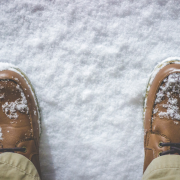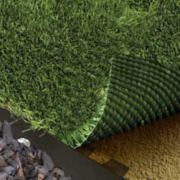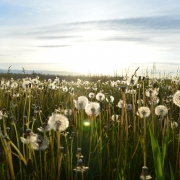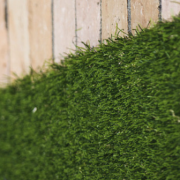No Mowing. No Watering. No Fertilizing.
Yard work is a tiresome chore, because a lot of upkeep is required to keep the lawn well manicured. The idea behind turf is maintenance shouldn’t be a worry anymore. Synthetic grass is built with an internal draining system, so liquids are able to filter through the surface without any kind of buildup. However, there are still a few steps you should take and be aware of – don’t worry it doesn’t require anywhere near the exertion from maintaining a regular yard.
1. Wash away debris
Solid objects such as leaves and debris can get stuck in the blades – sorry to say the absorption isn’t that powerful. It’s so easy to clean though, because all you need is a water hose. And if you’re one of those lucky guys that receives a bountiful of rainfall annually, that becomes turf’s (and your) best friend. If not, just hose down or use a leaf blower to rid of the solid objects.
Additionally, if you have pets, you want to pick up the solid waste and rinse the blades with water afterwards. Some people even resort to using a mild household detergent mixed with warm water to do the trick as well.
2. Brush it off
It’s also recommended to use a hard bristled brush to keep the turf blades in an upright position. Brushing turf helps keep any matting away and obtains the natural turf look and feel. Brushing is usually related to the amount of foot traffic the area receives – so more foot traffic means more brushing. If you need to brush, make sure to use one with synthetic bristles – never use one with metal or wire.
3. Keep damaging liquids away
Liquids such as oil, grease and acidic solutions are damaging to synthetic turf. Turf can become discolored if the chemicals are exposed to it. However, synthetic grass contains a stain resistant surface, which nothing a little water and soap can’t fix.
4. No vehicles allowed
Try and refrain from parking your vehicles on the turf. Hot exhaust or anything that gives off a lot of heat should be kept away from the synthetic turf so it can maintain it’s look and feel.
Investing in turf is such a worthwhile decision, because it saves so much time, money and energy. If you’d like to know more reasons why, be sure to read our other blog “Why Is Artificial Turf a Good Investment?”.
Have any questions? Reach out to us!




